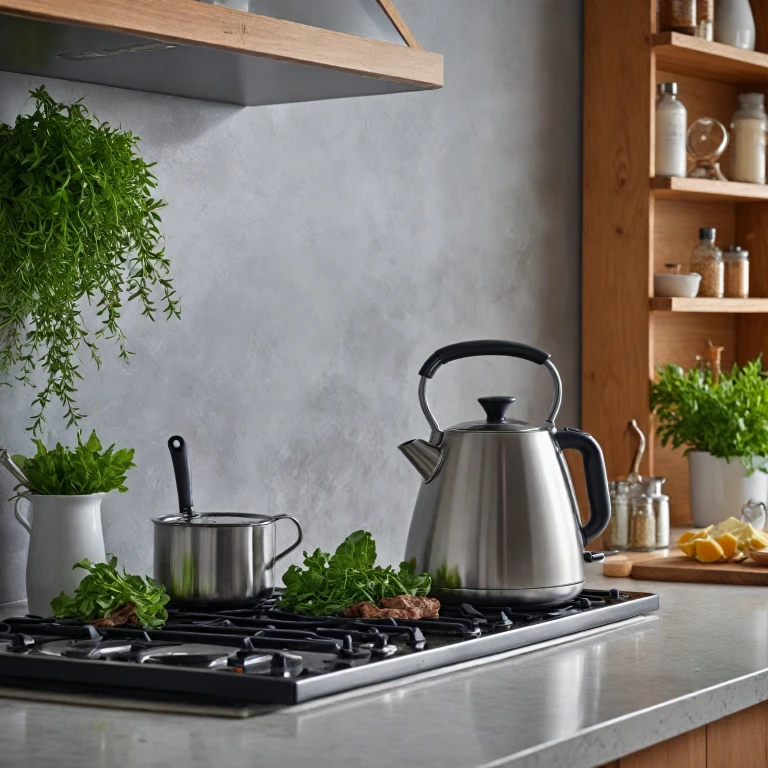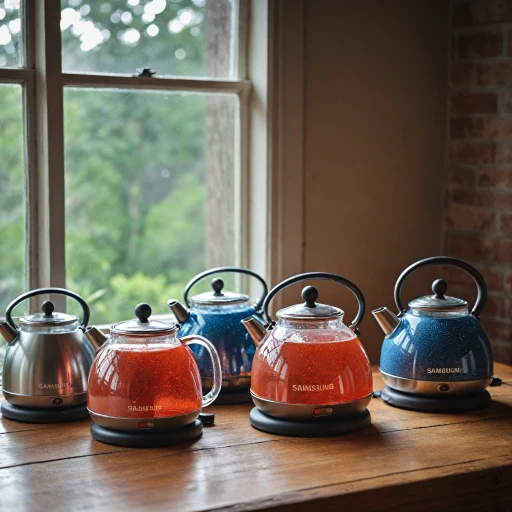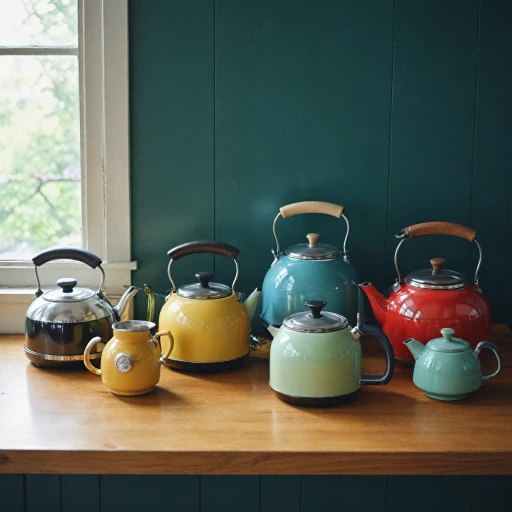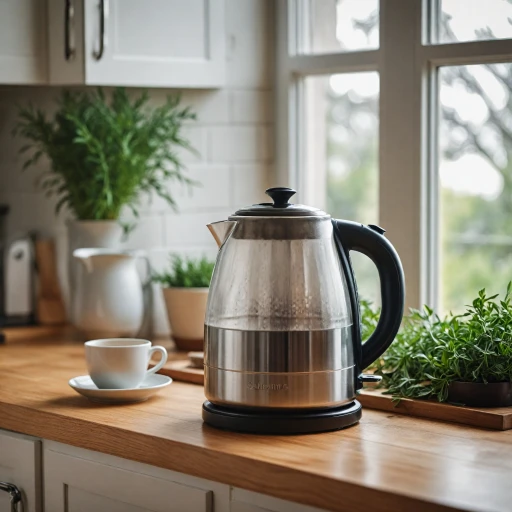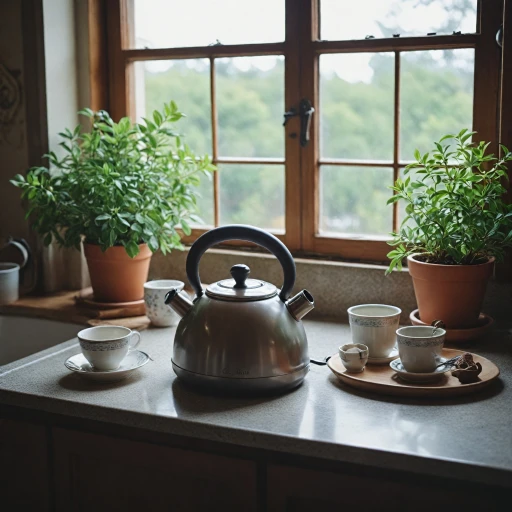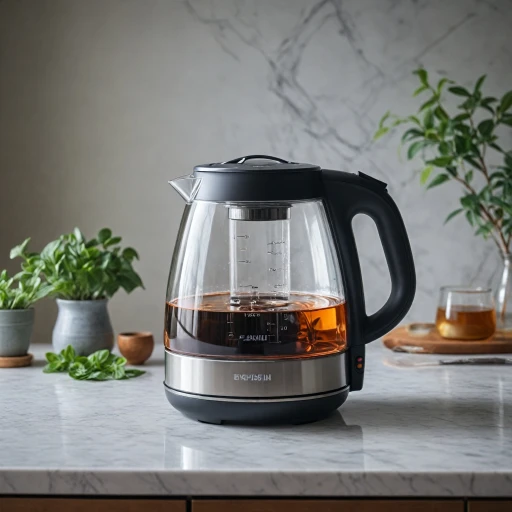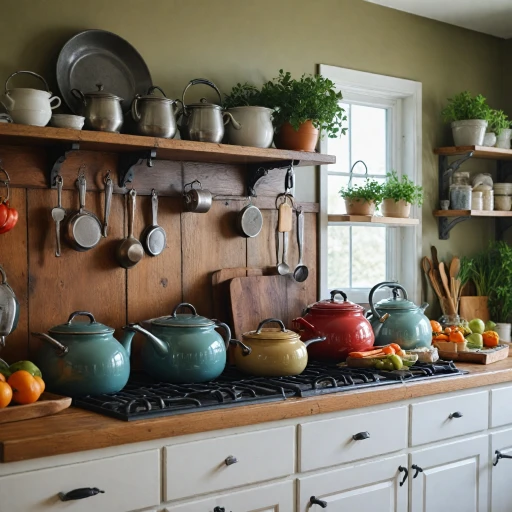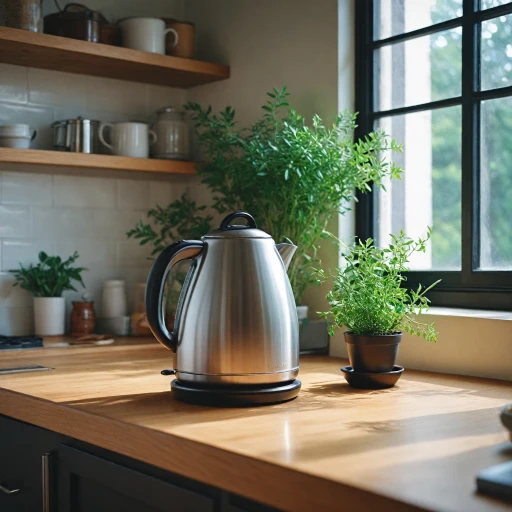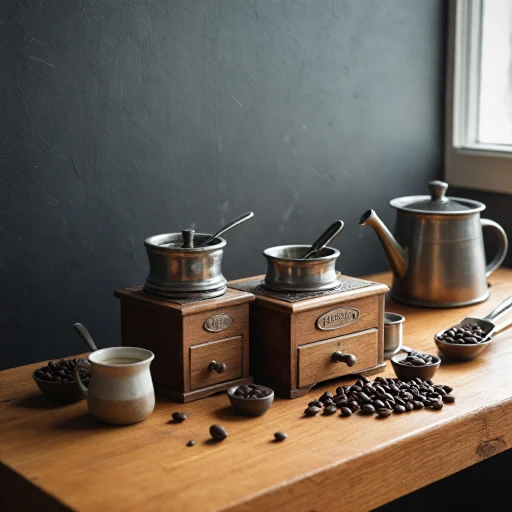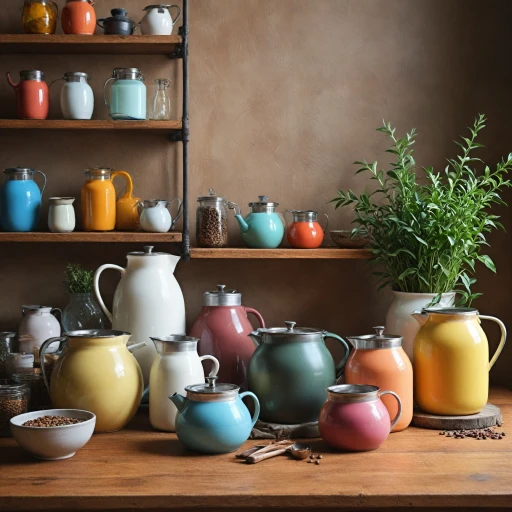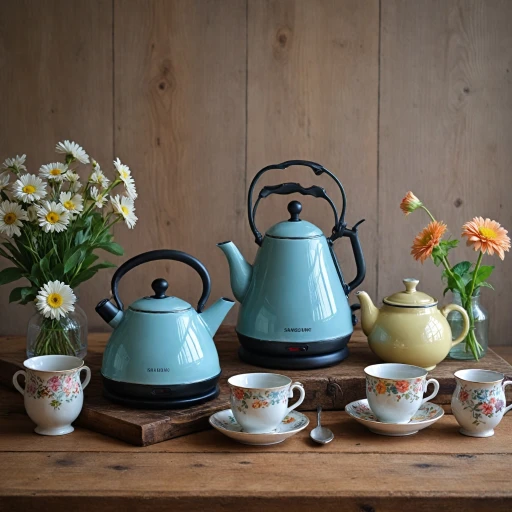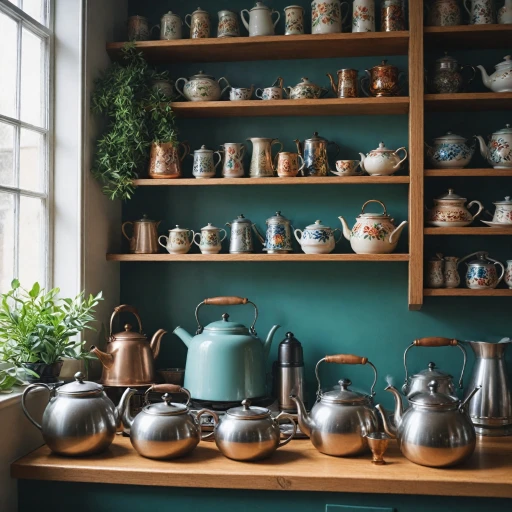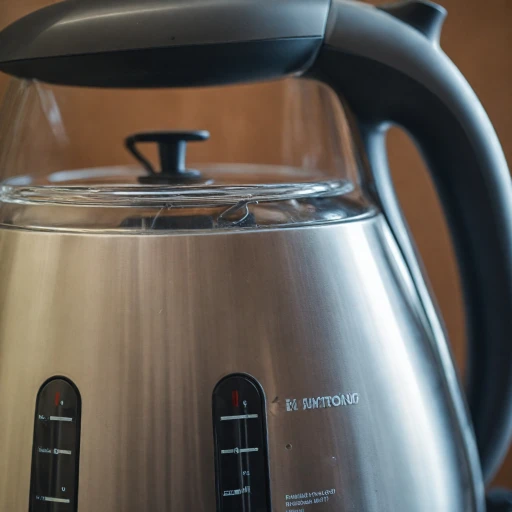
How Induction Technology Works
Unlocking the Power of Magnetic Fields
Induction technology has revolutionized the way we approach cooking and heating, offering efficiency and precision. At its core, induction technology relies on magnetic fields produced by an induction stove or cooktop to directly heat compatible kettles. When a kettle, made of ferrous material like stainless steel, is placed on an induction cooktop, a process is initiated where electromagnetic currents yield heat within the kettle itself, rather than on the cooktop's surface. This targeted heating method not only reduces energy waste but also speeds up the process of boiling water.
Maximizing Efficiency and Safety
The practical benefits of using an induction-compatible kettle are numerous when compared to traditional electric and stove top tea kettles. For instance, induction kettles boil water faster, which means less waiting time for your morning cup of coffee or tea. The design ensures that the heat is only applied to the vessel itself, keeping surrounding surfaces safer to touch. Given their advanced heating mechanisms, induction systems often pair well with features found in modern kitchens, making them a top choice for those looking to upgrade their appliances or replace aged kettles.
Advantages of Using an Induction-Compatible Kettle
The Perks of an Induction-Compatible Kettle
Choosing to use an induction-compatible kettle offers a plethora of benefits that make it a worthy addition to your kitchen. Whether you're a tea enthusiast or simply need to boil water efficiently, this type of electric kettle stands out.- Energy Efficiency: One of the key advantages of an induction-compatible kettle is its energy efficiency. When paired with an induction cooktop, it allows you to heat water quickly and with less energy compared to traditional electric kettles. This efficiency stems from the direct transfer of energy from the induction stove to the steel kettle, minimizing heat loss.
- Speed: Time is of the essence, especially in today's fast-paced world. The technology enables rapid heating, helping you to boil water faster than some conventional stove top kettles. This is ideal for those morning rushes or when guests unexpectedly drop by for tea.
- Precision: Induction-compatible tea kettles allow for precise control over boiling temperatures. This feature is especially beneficial for tea or coffee connoisseurs who understand that the perfect brew often requires specific water temperatures.
- Safety: An often-highlighted benefit is the enhanced safety these kettles provide. The induction method means the steel tea kettle itself heats up, rather than the entire cooktop. This reduces the risk of burns and makes the induction process safer for all users.
- Easy Maintenance: Many induction-compatible kettles are crafted from materials such as stainless steel, making them durable and easy to clean. They don't require the same level of upkeep as cast iron options, and with proper care, they can serve you reliably for years.
- Noise Level: Unlike electric whistling kettles, induction kettles tend to operate quietly, meaning you won't have to put up with the loud whistling noise often associated with boiling water on stove tops.
Choosing the Right Induction Kettle
Selecting the Ideal Induction-Compatible Kettle for Your Kitchen
Choosing the right induction-compatible kettle involves a few key factors that can enhance your experience of boiling water, making tea or coffee, and complementing your kitchen aesthetics.- Material: One of the top considerations when selecting an induction kettle is the material. Many users lean towards stainless steel kettles for their durability and resistance to rust and staining. Stainless steel also ensures that the kettle remains stylishly compatible with modern kitchen decor.
- Capacity: Determine your daily usage needs. A larger kettle might be more suitable for families or for individuals who often entertain guests with tea or coffee. Conversely, a smaller model may suffice for personal use.
- Features: Modern induction kettles often come with features such as a whistle to signal boiling water, insulated handles for safe handling, and markers to indicate maximum fill levels. Make sure to look for these additional features for enhanced convenience.
- Compatibility: Ensure that the kettle is specifically labeled as induction-compatible. It should have a flat, magnetic base that efficiently conducts heat when placed on an induction stove top.
- Brand and Reliability: It's wise to consider user reviews and product ratings to affirm the reliability of the kettles you are interested in. Choosing a reputable brand can often yield better long-term reliability and service.
Maintenance and Care for Induction Kettles
Maintenance Tips for Longevity
Regular maintenance and care can significantly enhance the lifespan of your induction-compatible kettle, whether it’s a sophisticated stainless steel or a more traditional whistling tea version. Here are some tips and practices to keep your kettle in top shape:- Regular Cleaning: One of the golden rules of maintaining your kettle is ensuring it’s free from lime scale, which can affect the performance and heating efficiency. Depending on your water hardness, you might need to clean it frequently. For electric kettles, a solution of vinegar and water works wonders.
- Inspect Electrical Parts: If you have an electric kettle, regularly check the electrical components, like the cord and plug, for any signs of wear and tear. Ensure they remain in top-notch condition to prevent any safety risks.
- Handle with Care: When pouring, especially from a stovetop or an electric kettle, be gentle to avoid damage. Over time, excessive force might lead to leaks or damage.
- Mind the Fill Line: Never fill beyond the maximum fill line to avoid overflow and potential damage to the heating mechanism.
- Proper Storage: After each use, ensure the kettle is stored in a dry area, especially if it’s made from materials like cast iron that could rust without proper care.
Handling Special Materials
Different materials require unique care. For instance, stainless steel kettles can benefit from regular polishing to maintain their shine, while cast iron tea kettles may need seasoning to prevent rust. Always refer to the manufacturer’s instructions to cater specifically to your model.Keeping Up With Trends and Innovations
As technology advances, induction cooktop and induction stove technology are seeing innovations that can enhance your kettle’s performance. Staying updated with these developments allows you to benefit fully from features such as efficient boiling times or energy savings, which are often highlighted in newer models. Proper maintenance isn’t just about keeping your kettle clean—it’s about ensuring safety and efficiency in your kitchen routine. With these tips, your induction-compatible kettle can serve you well for years to come, providing steaming cups of tea and coffee effortlessly.Comparing Induction Kettles with Traditional Electric Kettles
Comparing Induction Kettles with Traditional Electric Kettles
When it comes to choosing the perfect appliance to boil water, whether it's for a soothing cup of tea or an energizing coffee, the debate between induction kettles and traditional electric kettles is interesting. Let's explore some distinct differences and similarities:- Efficiency and Speed: Induction kettles take advantage of electromagnetic fields to directly heat the stainless steel or whistling tea kettle, reducing heat loss. This method allows the appliance to boil water quickly, making it favorable for those always on-the-go in the kitchen.
- Energy Consumption: The precise heating mechanism of an induction kettle means energy is efficiently used, lowering electricity consumption compared to conventional electric kettles.
- Material Compatibility: Traditional electric kettles are versatile with different materials like glass and plastic. Induction kettles, however, require induction-compatible materials, typically stainless steel or cast iron, to work effectively on induction cooktops.
- Heat Control: Those who appreciate the subtle art of brewing often opt for induction kettles as they offer superior temperature control. With induction, temperature adjustments can be more precise for perfect coffee or tea brewing.
- Safety Features: Induction technology is inherently safer as the stove top remains cool to the touch. In contrast, electric kettles can pose a burn hazard if their surfaces are heated.
- Maintenance: As discussed previously, induction kettles require selective care. Keeping the induction cooktop and kettle base clean is crucial for efficient functionality. Electric kettles might require regular remedies for limescale build-up, impacting kettle performance over the years.

